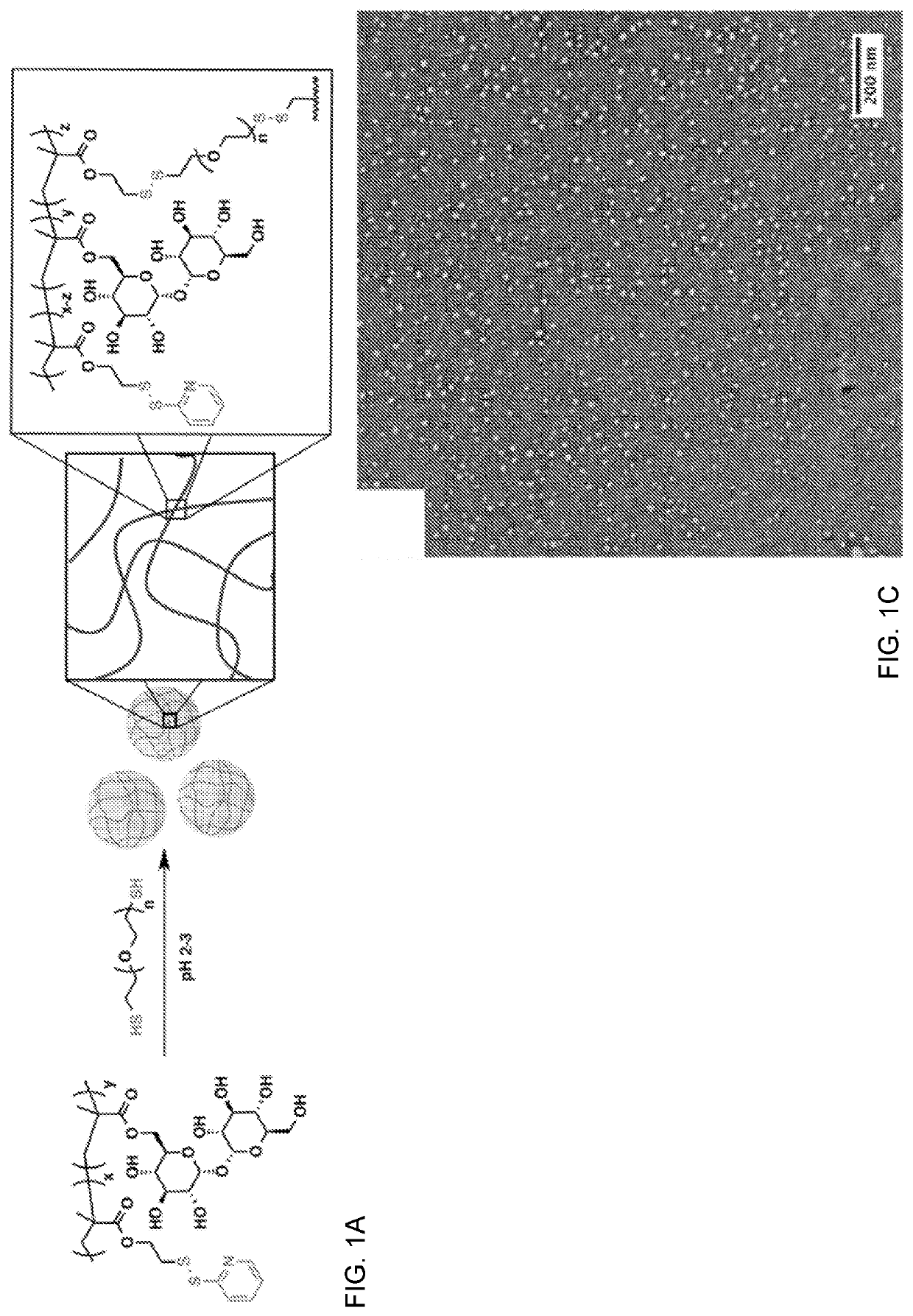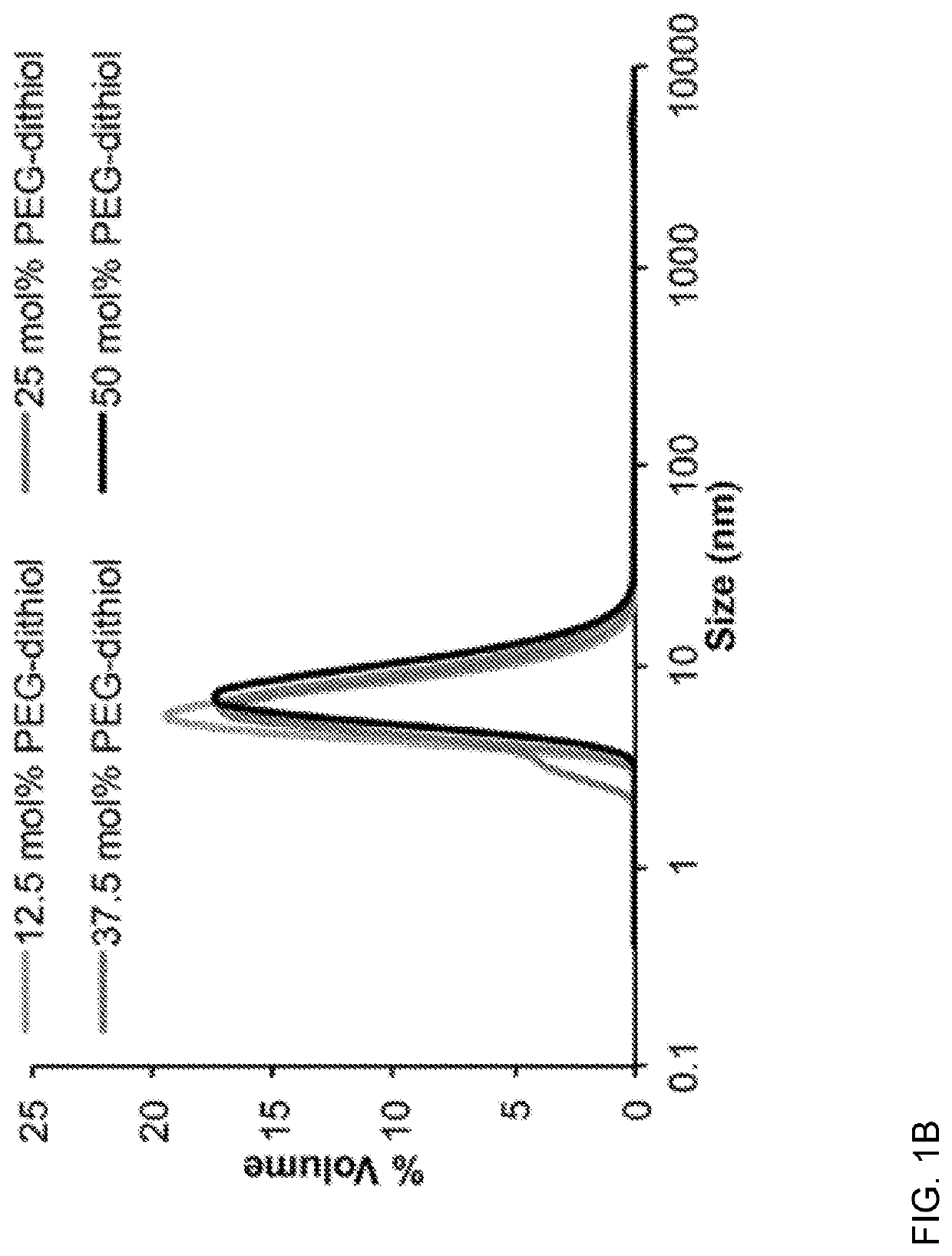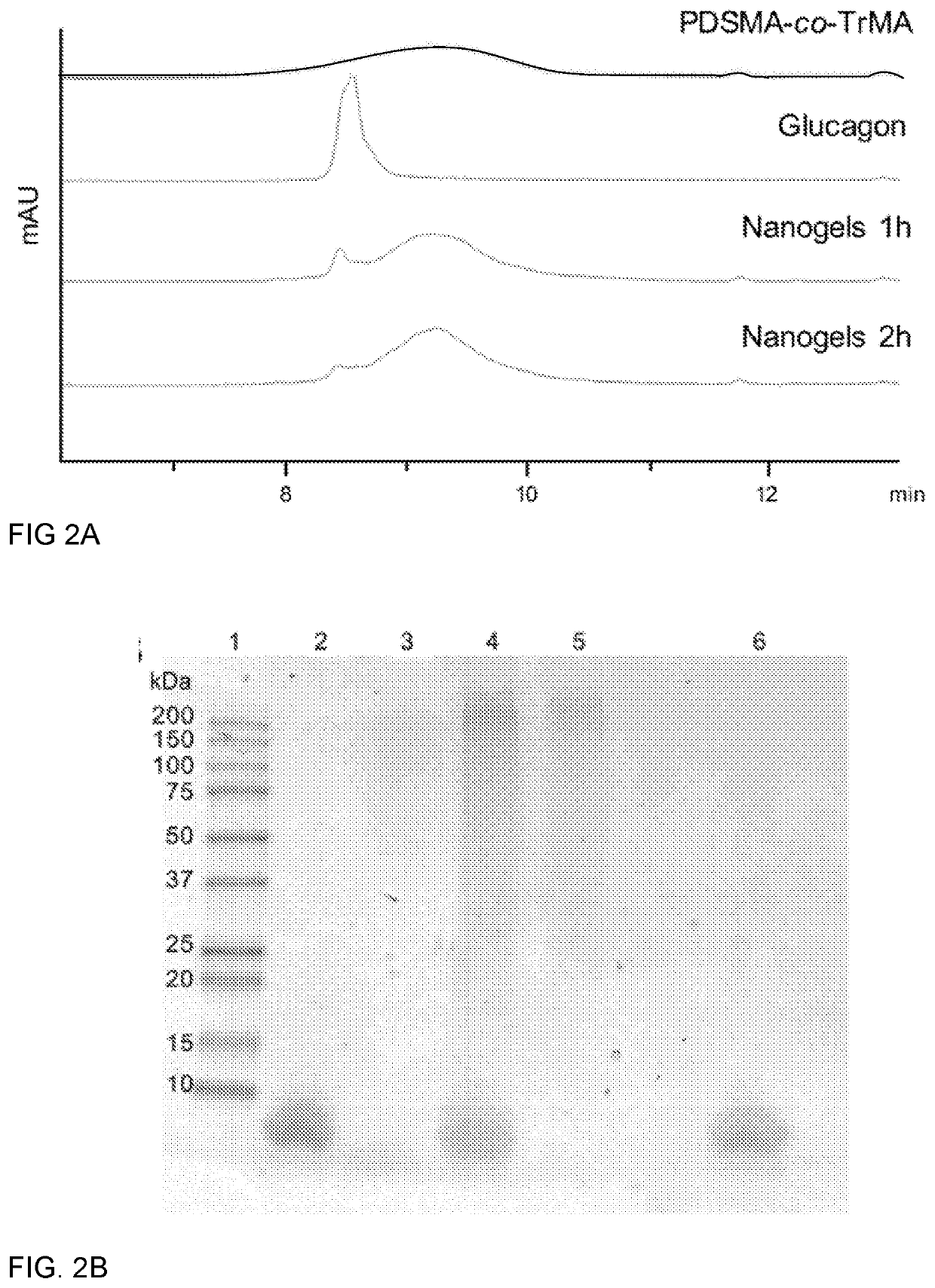Stabilization of Glucagon by Trehalose Glycopolymer Nanogels
- Summary
- Abstract
- Description
- Claims
- Application Information
AI Technical Summary
Benefits of technology
Problems solved by technology
Method used
Image
Examples
example 1
of TrMA Monomer and a Copolymer Containing PDS and Trehalose Side Chains, PDSMA-co-TrMA
[0108]The detailed synthesis can be found in Boehnke et al. (Adv. Funct. Mater., 2018.)
[0109]To create redox-responsive nanogels, copolymers containing pyridyl disulfide and trehalose side chains were prepared for cross-linking via disulfide exchange. PDSMA was synthesized following a previously reported procedure (FIGS. 8-11). We chose to utilize a methacrylate-functionalized trehalose monomer (TrMA) that we had synthesized previously using a multistep synthesis that employed protecting groups to obtain a single regioisomer (C6). To simplify the synthesis, we reacted unprotected trehalose with methacrylic anhydride in the presence of triethylamine and found that this gave the desired monomer as a mix of regioisomers with the C6 isomer as the predominant product (Scheme 1A). We screened several ratios of trehalose to methacrylic anhydride and found that a five-fold excess of trehalose gave the hig...
example 2
ynthesis and Characterization
[0112]Initially, nanogel formation was attempted using previously described conditions wherein substoichiometric amounts of reducing agent were used to facilitate cross-linking via disulfide formation between the thiol monomers. However, TEM images of polymer plus TCEP indicated no nanogels had formed, and no change in morphology was observed when compared to polymer only samples (FIGS. 19A-B). We hypothesized that the lack of cross-linking was caused by the steric bulk of the trehalose side chains.
[0113]Applicants note that this is where the trehalose-based nanogels differs from the PEG side chain gels—where this was very unexpected and for trehalose polymer Applicants could not just reduce but had to add a cross-linker.
[0114]To circumvent this issue, we introduced 1,000 Da PEG-dithiol as a cross-linker (FIG. 1A). Resulting PDSMA1-coTrMA0.8 nanogels were characterized using dynamic light scattering (DLS) and transmission electron microscopy (TEM), and f...
example 3
Stabilization and Cytotoxicity and Bioactivity Studies
[0122]Glucagon Stabilization and Cytotoxicity and Bioactivity Studies can be found in Boehnke et al., Adv. Funct. Mater., 2018.
[0123]The cell compatibility of the polymer and nanogel components to HDFs was evaluated using a LIVE / DEAD viability / cytotoxicity assay (Invitrogen). A control containing no polymer or nanogel was also prepared. Cells were cultured using fibroblast basal medium supplemented with a low serum growth kit (ATCC) at 37° C. with 5% C02. The cells were seeded in 96-well plates (BD Falcon) at a density of 1000 cells per well. After 24 hours, culture media was replaced with 100 μL media containing PDSMA-co-TrMA or PEG cross-linked nanogels and the cells were incubated for 24 hours. Cells were then washed with pre-warmed Dulbecco's phosphate buffered saline (D-PBS) and stained with LIVE / DEAD reagents (2 μM calcein AM and 4 μM ethidium homodimer-1). Fluorescent images of each well were captured on an Axiovert 200 mi...
PUM
| Property | Measurement | Unit |
|---|---|---|
| Size | aaaaa | aaaaa |
| Size | aaaaa | aaaaa |
| Nanoscale particle size | aaaaa | aaaaa |
Abstract
Description
Claims
Application Information
 Login to View More
Login to View More - R&D Engineer
- R&D Manager
- IP Professional
- Industry Leading Data Capabilities
- Powerful AI technology
- Patent DNA Extraction
Browse by: Latest US Patents, China's latest patents, Technical Efficacy Thesaurus, Application Domain, Technology Topic, Popular Technical Reports.
© 2024 PatSnap. All rights reserved.Legal|Privacy policy|Modern Slavery Act Transparency Statement|Sitemap|About US| Contact US: help@patsnap.com










